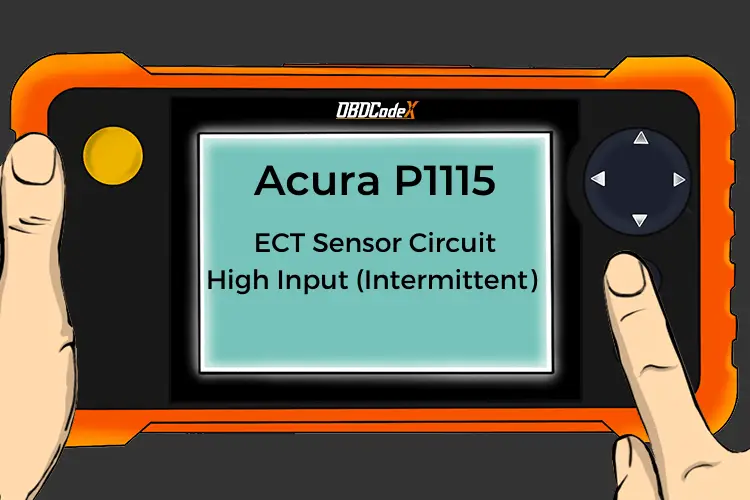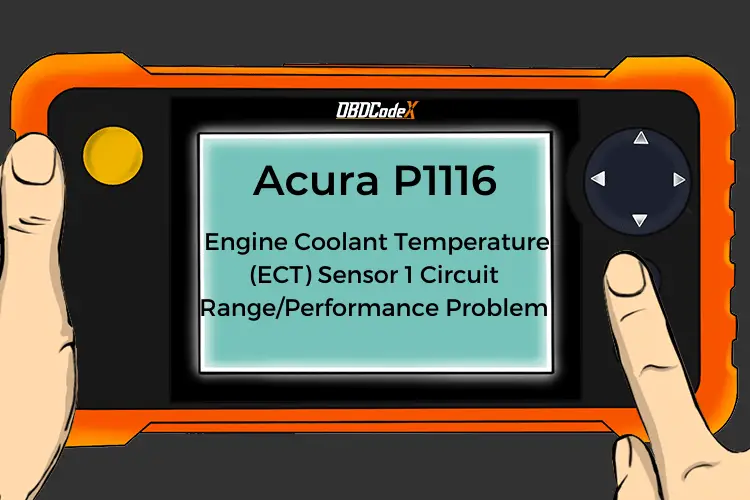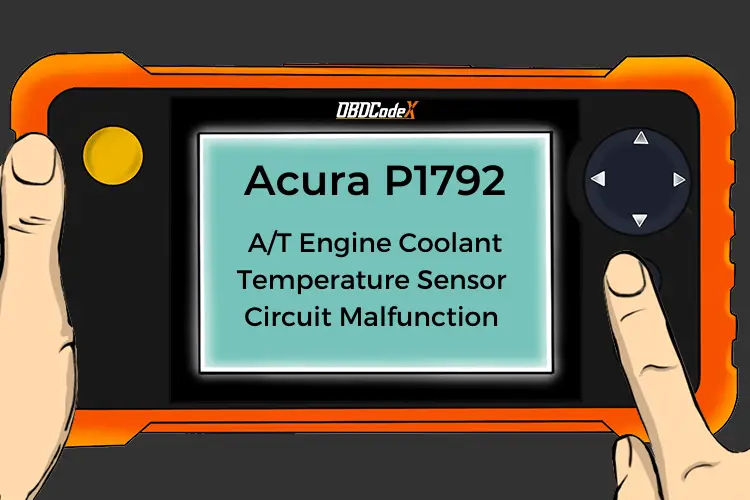P011B: Engine Coolant Temperature/Intake Air Temperature Correlation
Is your scanner showing P011B?
No worries. We'll show you what it means and how to deal with it.
P011B: Engine Coolant Temperature/Intake Air Temperature Correlation
OVERVIEWWhat Does The P011B Code Mean?
This generic powertrain diagnostic trouble code (DTC) typically applies to all OBD-II vehicles. That may include but is not limited to vehicles from Toyota, Saab, Honda, , Chevy, Ford, Dodge, Chrysler, Scion, etc. Although generic, the specific repair steps may vary depending on make/model. Anecdotally this code seems more common on Toyota vehicles (Tundra, Tacoma, Corolla, etc.).
When a code P011B is stored in an OBD-II vehicle, it means that the powertrain control module (PCM) has detected a problem with the correlating signals between the engine coolant temperature (ECT) sensor and the intake air temperature (IAT) sensor.
ECT sensors are normally composed of a thermal resistor that is embedded in a durable resin then surrounded by a brass, aluminum, or plastic housing. The housing is typically fashioned so that it threads into the engine block, radiator, intake manifold (coolant passage), or cylinder head.
It is shaped and positioned so that, once the thermostat has opened, engine coolant may flow across the tip. The exposed resistor is near the tip of the sensor.
Increasing engine coolant temperature causes the level of resistance in the ECT resistor to decrease and circuit voltage to increase. The PCM recognizes these variations in ECT voltage as changes in engine coolant temperature.
The ECT sensor provides data to the PCM, for drivability strategy and electronic cooling fan operation. It may also serve to provide a signal to the temperature gauge in the instrument cluster.
The IAT sensor acts in much the same manner as the ECT sensor, except with a much narrower range. It only monitors variations in ambient air as opposed to changes in engine cooling temperature.
The IAT sensor is typically positioned so that ambient intake air may be drawn across it as it is enters the engine intake. The IAT sensor is almost always inserted into the air filter housing or air inlet pipe.
If the PCM detects voltage signals from the ECT sensor and the IAT sensor which differ by more than a preprogrammed degree, a code P011B will be stored and a malfunction indicator lamp (MIL) may be illuminated. Multiple ignition cycles, with a failure, will be required for MIL illumination on some vehicles.
What Are The Symptoms Of The P011B Code?
Symptoms of a P011B engine code may include:
- Excessive rich or lean exhaust
- Rough engine idle (especially at cold start up)
- Diminished fuel efficiency
- Decreased engine performance
- Other engine temperature codes
What Are The Potential Causes Of The P011B Code?
Causes for this code may include:
- Defective ECT/IAT sensor
- Open or shorted ECT/IAT sensor wiring or connector
- Low engine coolant condition
- Bad thermostat
- Faulty water pump
- Air pocket in engine cooling system
- PCM or PCM programming error
How Serious Is This P011B Code?
Engine drivability, electronic cooling fan operation, and/or temperature gauge accuracy may be effected by the conditions which contribute to a code P011B being stored, it should addressed with urgency.
How Can You Fix The P011B Code?
A diagnostic scanner, a digital volt/ohmmeter (DVOM), and a reliable vehicle information source are among the tools that will be required to diagnose a code P011B.
My diagnosis for any ECT sensor related code, would begin with making sure that the engine cooling system is filled to the proper level with the correct coolant and operating the engine to ensure that the thermostat, water pump, radiator, and cooling fans are all working properly.
No air pockets can be present in the cooling system. All facets of the engine cooling system must be working properly before this code can be diagnosed. With the cooling system operating normally, visually inspect all ECT/IAT system wiring and connectors and make repairs as required.
Now, connect the scanner to the vehicle diagnostic port and retrieve all stored codes and freeze frame data. Freeze frame data could be described as a snap shot of the exact circumstances which were occurring at the time of the failure that led to the stored code P011B. Write this information down as it will prove helpful as the diagnosis unfolds. Clear the codes and test-drive the vehicle to see if the code is reset.
Test the individual ECT/IAT sensors, using the DVOM, if the code is reset before the PCM enters readiness mode. ECT/IAT sensors that fail to comply with the manufacturer’s specifications must be replaced. Consult your vehicle information source for component testing specifications.
Test individual system circuits using the DVOM if all ECT/IAT sensors comply with manufacturer’s specifications.
If all ECT/IAT sensors and circuits are within specifications, suspect PCM failure or a PCM programing error.
Additional diagnostic notes:
- The IAT sensor is often left unplugged after air filter replacement or other related maintenance
- Be sure to unplug all related controllers from the circuit before testing resistance with the DVOM
- Use caution when testing high pressure engine coolant
- Check technical service bulletins (TSB) for help with your diagnosis
Recommended Parts
Below are some recommended auto parts to help you address the trouble code affecting your vehicle and get it running smoothly again:
Note: During the purchasing process, please check carefully whether the part you want to buy fits your car!
Reference Sources
Technical Service Bulletin – Toyota












